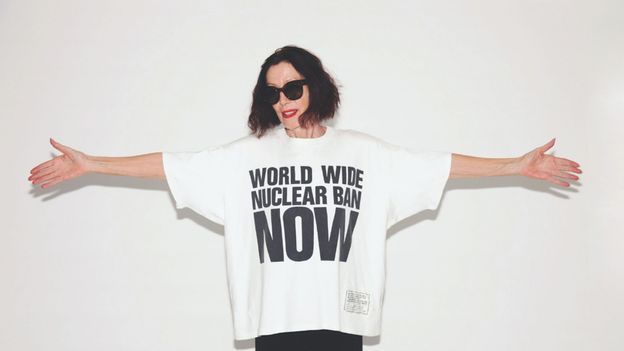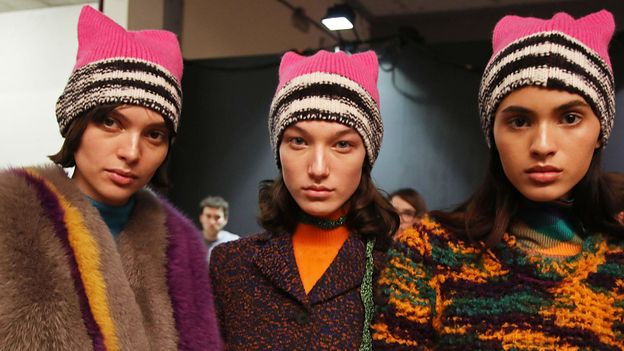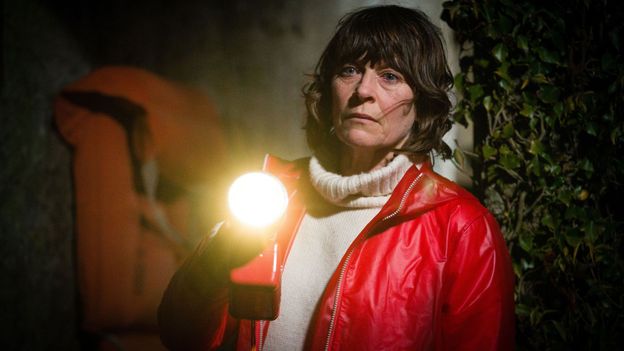By the 1990s, the Hamnett brand had a multi-million pound turnover. They were heady days. “It was such fun, so fabulous. Fashion shows, the best hotels in the world, flying around everywhere,” says Hamnett. “And I was the original spoilt brat. I just wanted to make clothes that were exquisitely beautiful and didn’t care what they were made of. It was a time of total innocence – and, yes, ignorance. We were just having a lovely time but, in actual fact, we were all guilty.”
The crunch came in 1989, when Hamnett, then 42 and at the peak of her success, initiated research into the impact of her industry on people and the planet. “The results were devastating, a tsunami of nightmare,” she recalls. “Every single material and process had a negative impact – manmade fibres, leather tanning, viscose, dyeing and finishing. Thousands of deaths from accidental poisoning from conventional cotton agriculture; desertification and long-term contamination of aquifers.”
Mercurial presence
Distressed and angry, Hamnett tried lobbying for change, using her collections as platforms for issues that galvanised her, and badgering licensees to reduce the impact of the collections. But it was all pretty hopeless and, before long, Hamnett stepped away from fashion to focus on activism and collaborations with charities. When she relaunched the label in 2017, with re-issues of archive pieces and irreproachable ethical and sustainable credentials, it was a completely different landscape.










